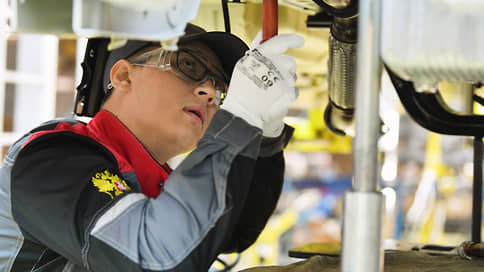The Ministry of Industry and Trade wants to localize auto electronics using platforms from China
[ad_1]

As Kommersant found out, the Ministry of Industry and Trade is discussing with automakers the idea of increasing localization points for installing Russian auto electronics on cars produced in Russia on Chinese platforms. The idea originally came from AvtoVAZ. This will increase the concerns’ chances of returning the recycling fee. It is also planned to force cars imported from China to be equipped with electronics from the Russian Federation: so far this is only being done with the ERA-Glonass unit. The industry doubts that these ideas will come to fruition.
A localization schedule for auto electronics is planned to be created in Russia for Chinese platforms, the Russian Ministry of Industry and Trade said in a statement following a meeting at the AvtoVAZ site. We are talking mainly about Russian companies involved in the production of Chinese cars: now these are Sollers, Motorinvest, Moskvich and Avtotor, and potentially AvtoVAZ.
As Kommersant’s interlocutors told us, during the meeting AvtoVAZ proposed doubling localization points for some electronic components for cars on “Chinese platforms.” Automotive companies need points to return recycling collection. AvtoVAZ told Kommersant that now “the proposals are being discussed and it is too early to give details.” Kommersant’s interlocutor notes that there is a need to increase points: although now the main share of model localization is obtained through investments in R&D, as turnover grows and projects develop, the share will fall.
A Kommersant source at another automaker knows about such a proposal. He calls the measure reasonable, noting: it would be advisable to introduce it for a limited period to stimulate deeper localization of “Chinese platforms.” At the same time, this was discussed in connection with restricting access to government procurement and preferential lending and leasing programs for those Russian cars on “Chinese platforms” that do not have at least two electronic components from Russian suppliers, he adds. “But this condition may not be feasible for a very long time, since the development, implementation and testing of new units is a rather lengthy process,” concludes Kommersant’s interlocutor.
Motorinvest considers the measure “an important incentive for Russian enterprises of electronic components to quickly adapt their production to the state localization program.” “It is clear that this is a temporary measure, but it is necessary to motivate our partners,” they added. Deputy head of the ministry Vasily Shpak has similar rhetoric: “To ensure competitive prices for consumers, it is necessary to scale the volume of the available market. Of course, without the significant market share that cars on Chinese platforms now occupy, localization will be less effective.”
Traditionally, the Ministry of Industry and Trade – through the automotive industry – avoided increasing the total number of localization points: if the points for some components were increased, they were removed from others. This was justified by the fact that it would not make it easier to achieve the localization target. Kommersant’s source notes that the idea has yet to be agreed upon with the automobile department.
Also, according to Kommersant, the idea was discussed at the meeting to force Chinese automakers to install Russian electronics on cars imported into the Russian Federation. The Ministry of Industry and Trade confirmed that the issue was discussed. Kommersant’s source says that they were talking about the potential installation of not only the Russian ERA-Glonass on all cars, which is already being implemented by some players from China, but also ABS, an engine control system controller, a body electronics control unit, etc. This This can be realized through the supply of electronics produced in the Russian Federation to China – this is what some automakers are now doing with ERA-GLONASS units. The Ministry of Industry and Trade cites the words of Vasily Shpak that the localization of cars from China in terms of auto electronics, as a rule, is limited to the installation of the ERA-GLONASS system. Another Kommersant interlocutor states that this idea is unrealistic. In general, he says, all proposals were put forward “on the eve of the meeting” and were not worked out in detail.
This is not the first time that electronics has become the subject of discussion about localization in the automotive industry: in the fall of 2023, the idea was discussed to increase the number of localization points awarded for operations already performed for assembling engine control units for two years, and from 2026 – to sharply reduce it if domestic components are not used ( see “Kommersant” dated October 9, 2023). These changes, a Kommersant source says, are going “their own way” and will most likely be accepted. At the same time, there are problems with the localization of the electronics themselves: for example, there are almost no Russian printed circuit boards on the civilian market.
Automotive analyst Vladimir Bespalov believes that creating competencies for localizing auto electronics in the Russian Federation is an important topic. At the same time, he notes, so far we are largely talking about assembly or incomplete localization. As for imports, he considers the idea unrealizable, since the case with ERA-Glonass is still unique, and in general, electronics in China are cheaper.
[ad_2]
Source link





